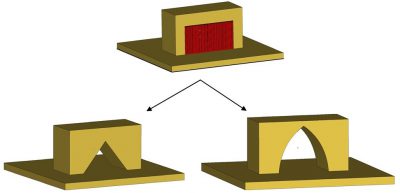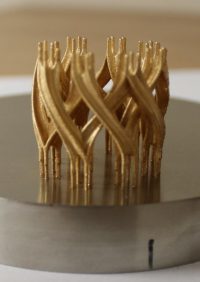Check out our guide on some of the biggest reason why builds fail and how you can fix them.
For us, we want to make sure your product produced with AM is to the highest standard and that you don’t experience build failure. Here are some common reasons why your build could fail and how to fix them.
When any part is printed with Additive Manufacturing, the build needs to be supported or optimised to be self-supported. This means ensuring the design is oriented well enough that the supports if needed are easily removed. If not then the build is classed as a failure and would need to be reprinted.
To avoid the build failing from irremovable supports, first, look to optimise your build to make it self-supporting. You can do this by utilising the maximum support angle of 45 degrees – using structures found in nature rather than straight lines. You can also look at the orientation of the build on the platform, making sure that you utilise the Z-direction strength.
We would need to generate supports in between this design, which would be difficult if not impossible to remove.
A major issue we run into are designs that are submitted with rough edges and gaps. What this means is that where those gaps and edges are its more likely to not fuse correctly when the layers fire, meaning your build will be structurally unstable and likely collapse.
To ensure good edges and normal, it’s vital that you analyse them in your chosen CAD software and either fix them before submission or rebuild them. Parts must also be watertight solid, which is designed as one whole part not built as two pieces – this prevents parts being missed from the process and can easily be fixed by selecting a ‘Boolean Union’ in your CAD software.
You can see this design has ‘naked edges’ highlighted, these will need to be fixed
A major benefit of Additive manufacturing is the level of detail that you can achieve with the technology. But the detail has its own minimum tolerances and if these aren’t adhered to then the build could likely fail or cause the parts to be fragile and easily bent when supports are removed.
We recommend that any detailing follow these simple guidelines:
You can see the example here of supporting walls and where they would feature. If the interior was teardrop-shaped or if the edges are chamfered this can help support your design.

You can see the example here of supporting walls and where they would feature. If the interior was teardrop-shaped or if the edges are chamfered this can help support your design.
In all cases, there are always imperfections, known as witness marks, on each build where we remove the supporting structures. If your build has hard to remove supports you will also have hard to finish witness marks.
So while the build itself is a success, finishing should always be considered when designing your pieces – otherwise, it’s likely to not be commercially sellable.
If you’re already following our guidance for supports then the advice is the same, think about how and where your supports will go. If your supports end up in a hard to reach place, can the design be modified for to self-support or can the supports be integrated into the design?

This design by A H Mink “Meiijles”, integrates the support structures into the design and they are easily snapped off and as a bonus, the interior angles and shapes are all self-supporting.
Our team can help guide you through any questions you might have and can help ensure your builds are smooth and scare-free. Get in touch for more information today.